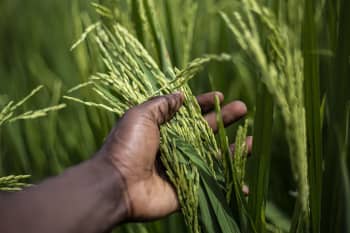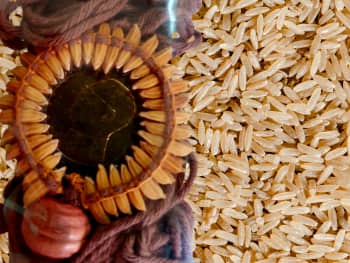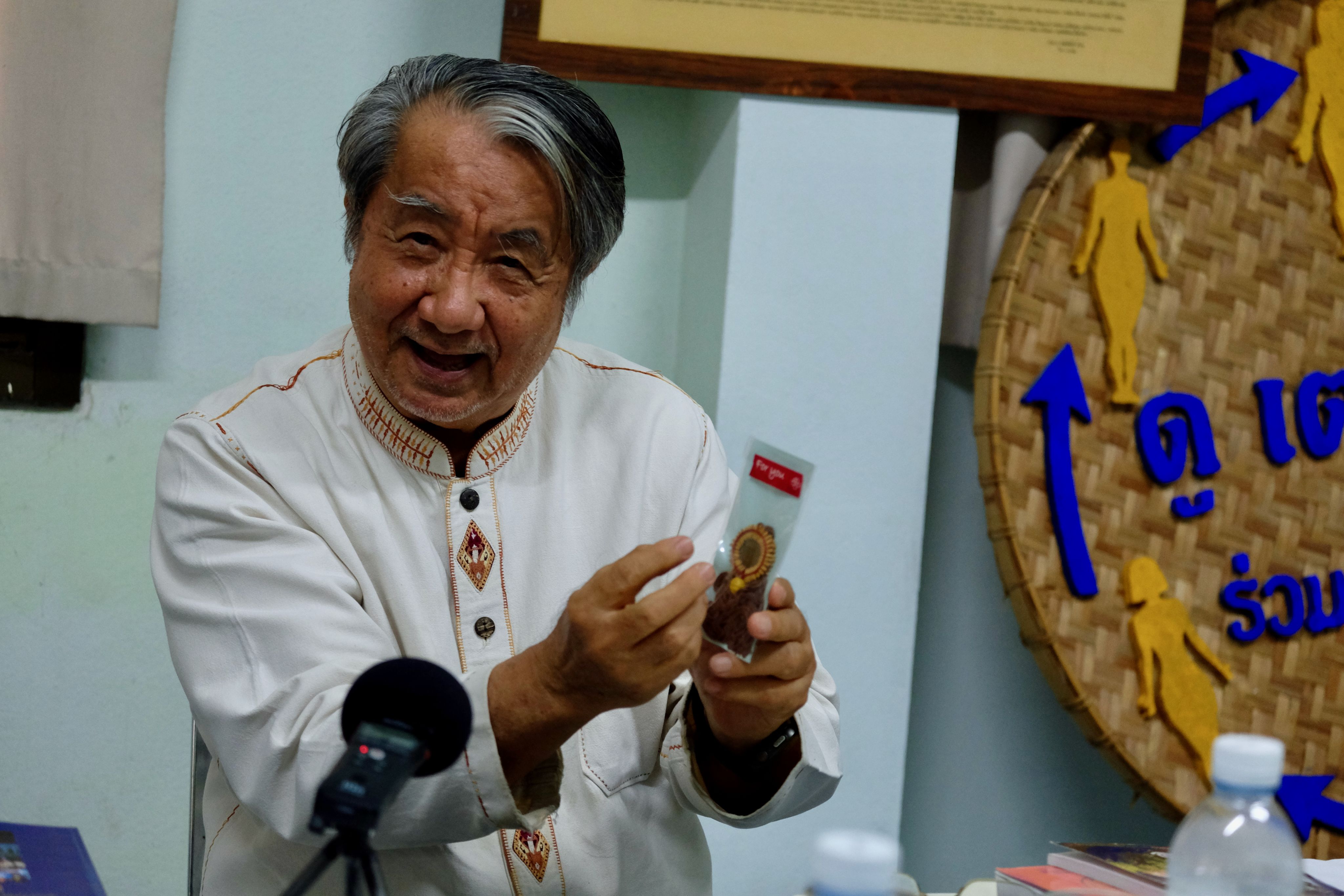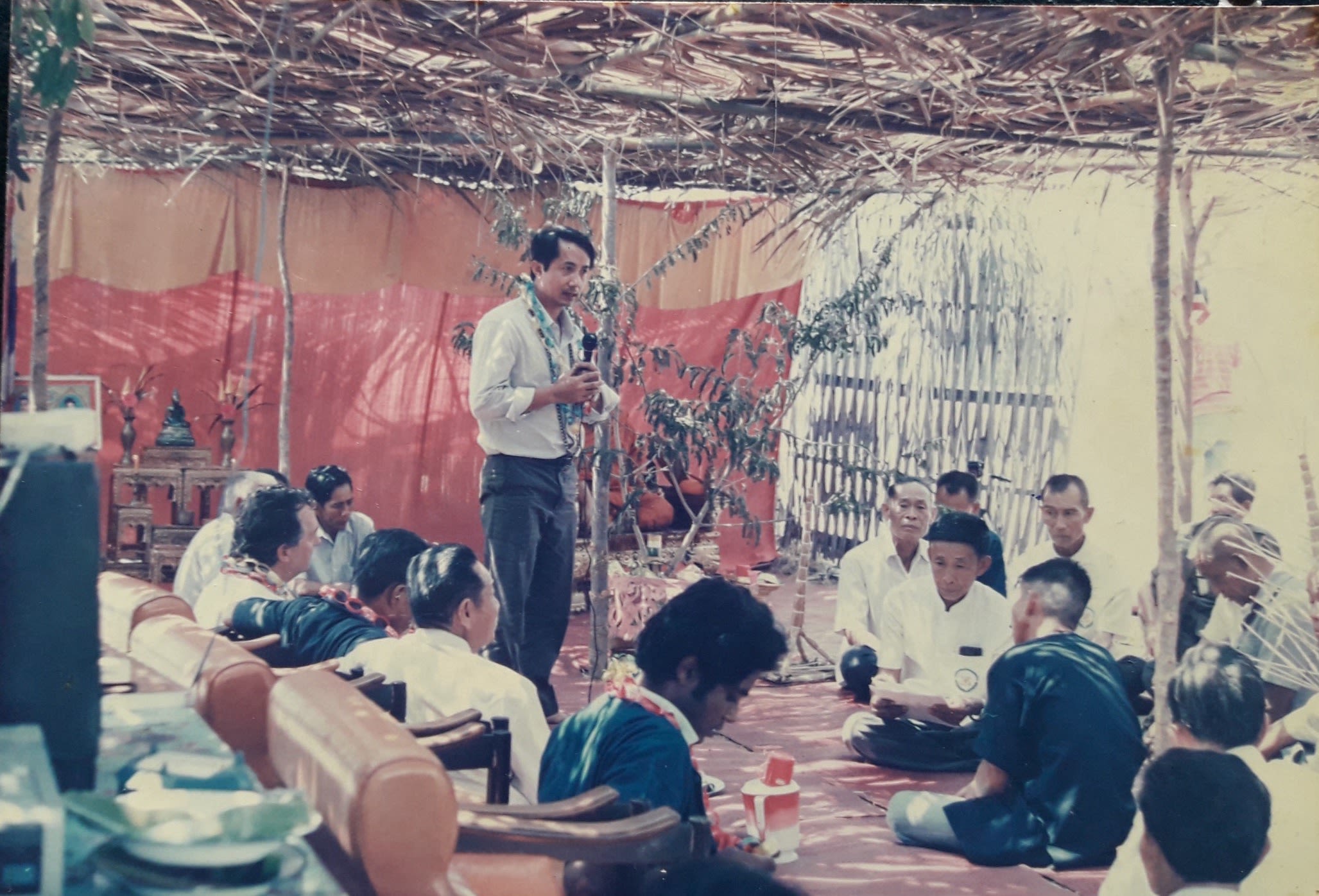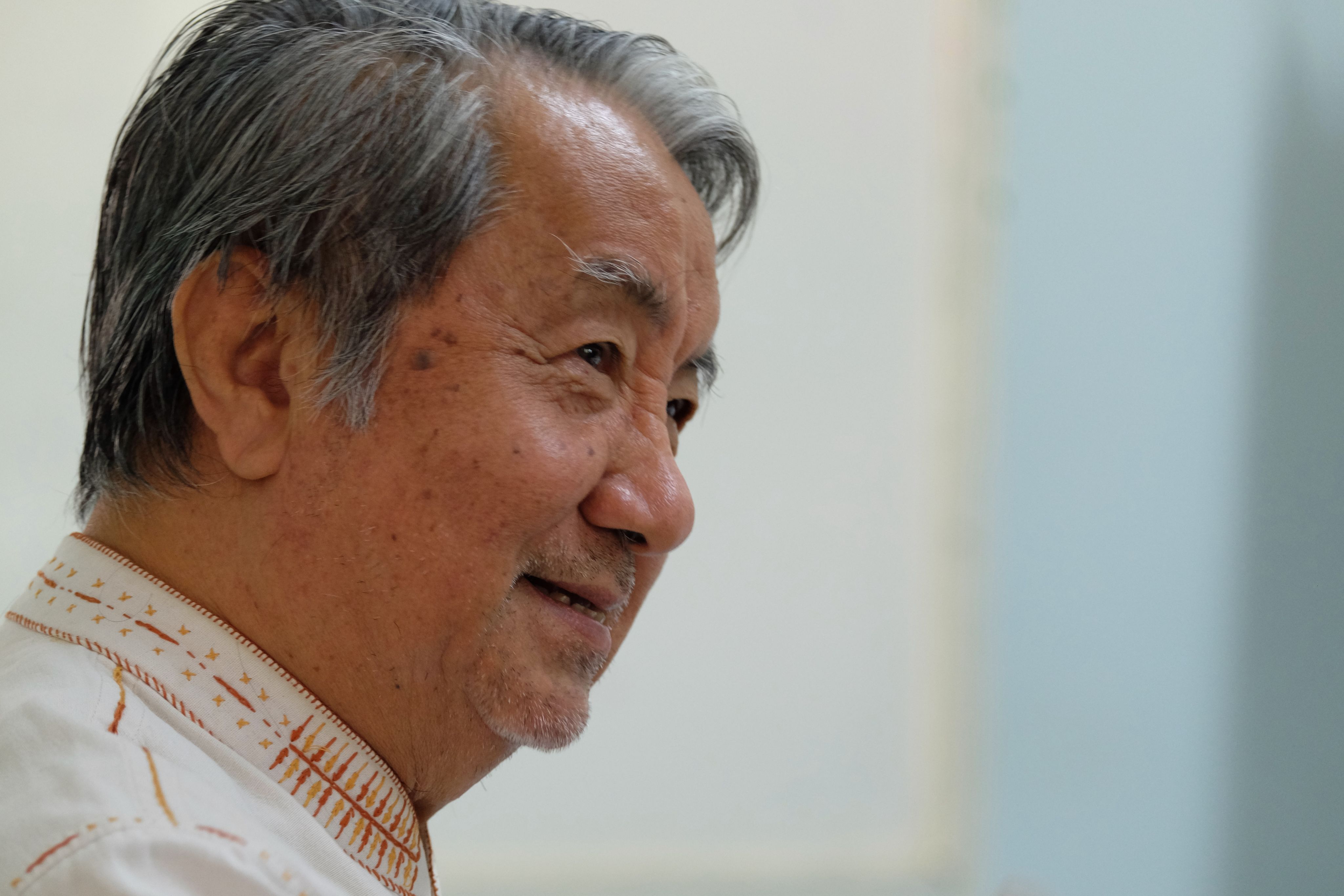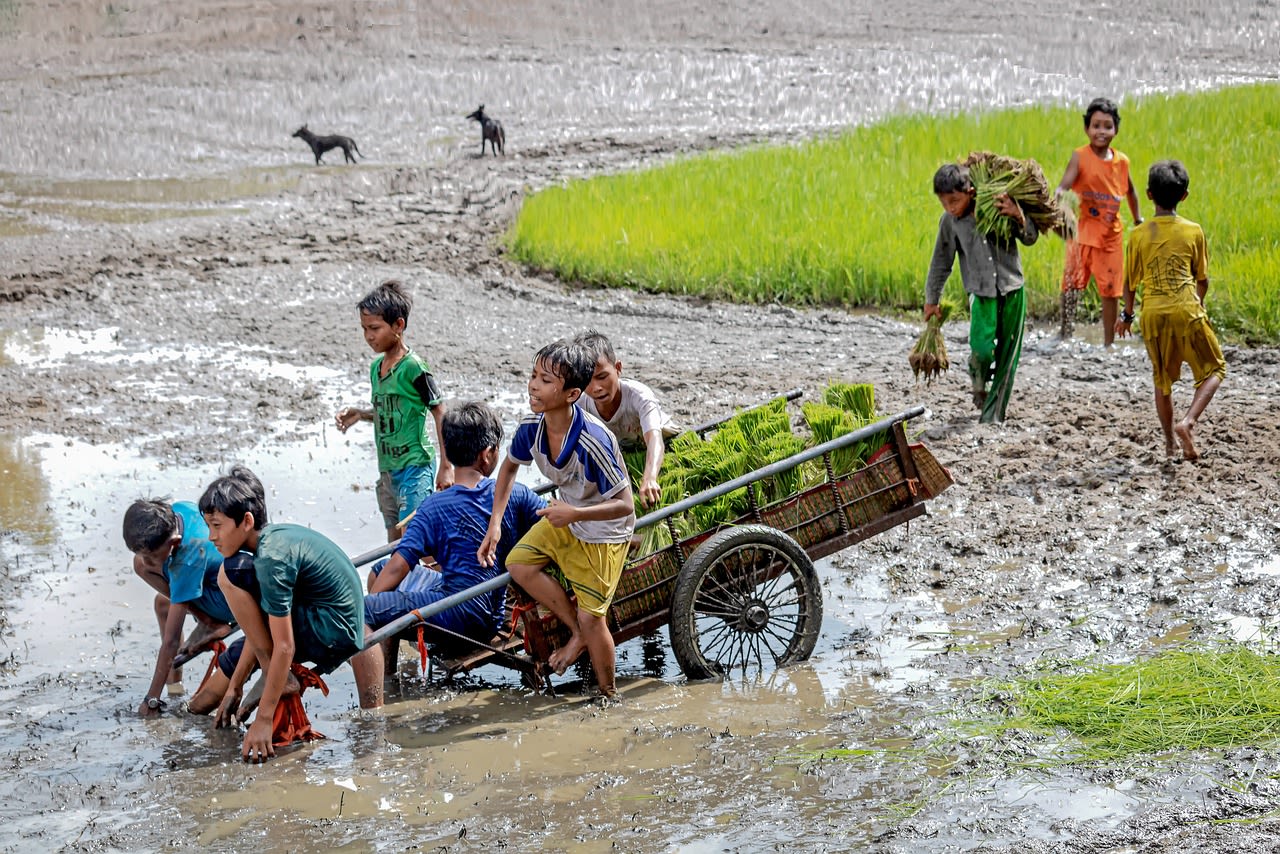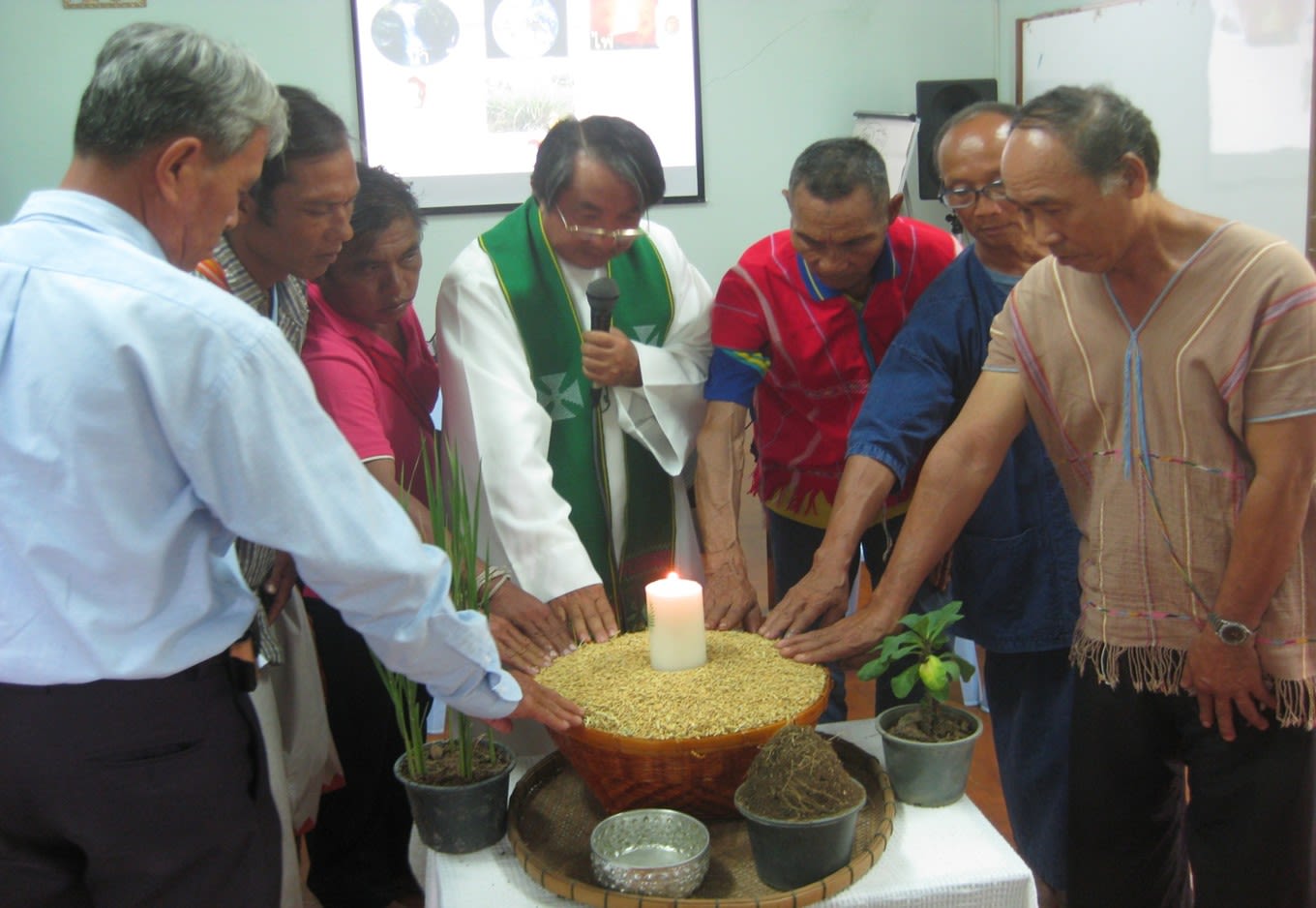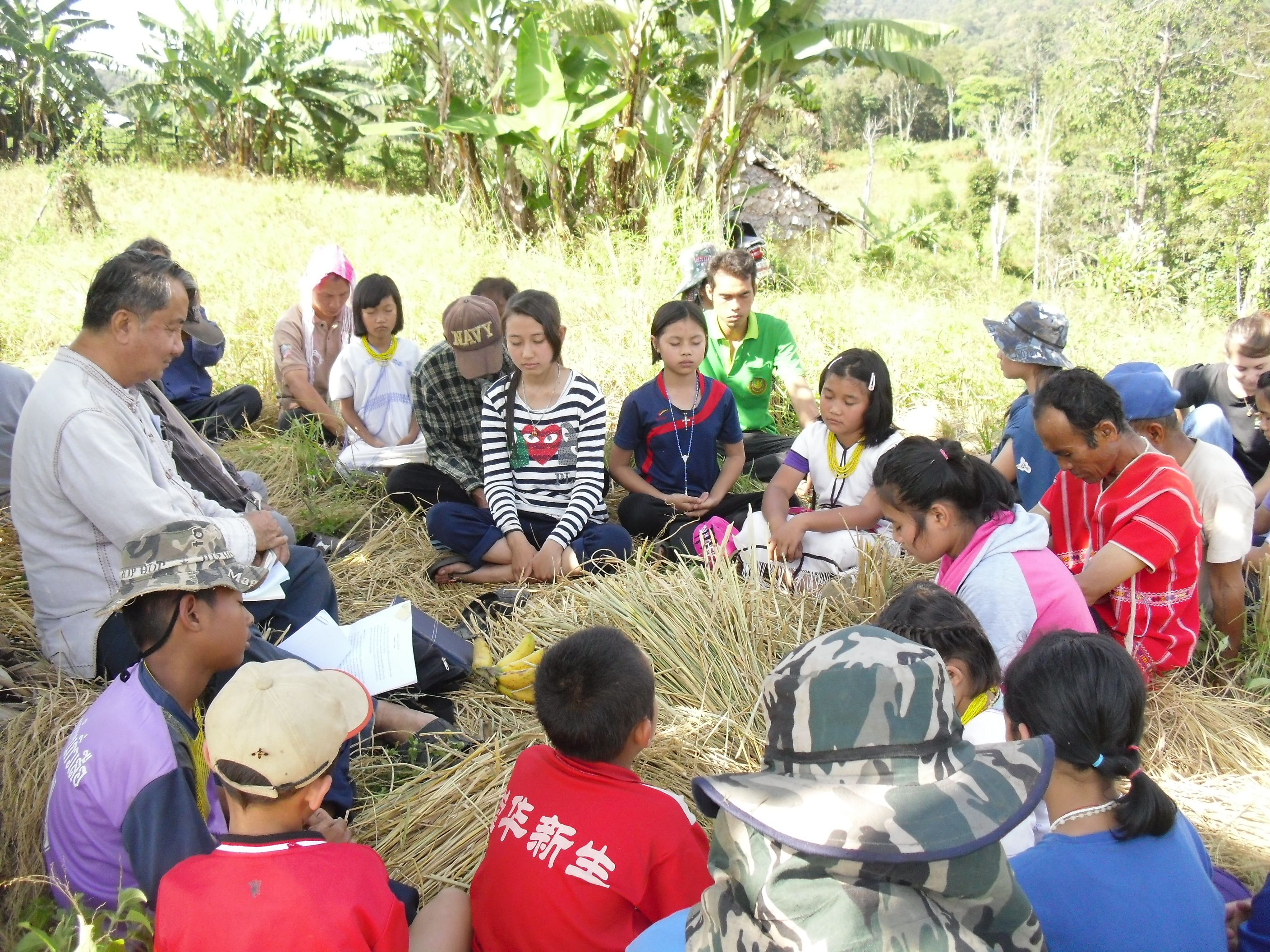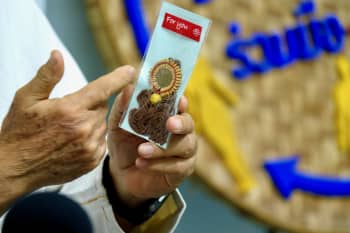Back to the Future | 'Nine Grains of Rice'
The humble rice grain can inspire future generations to cultivate hope, develop a balanced way of life and ensure cultural and environmental sustainability
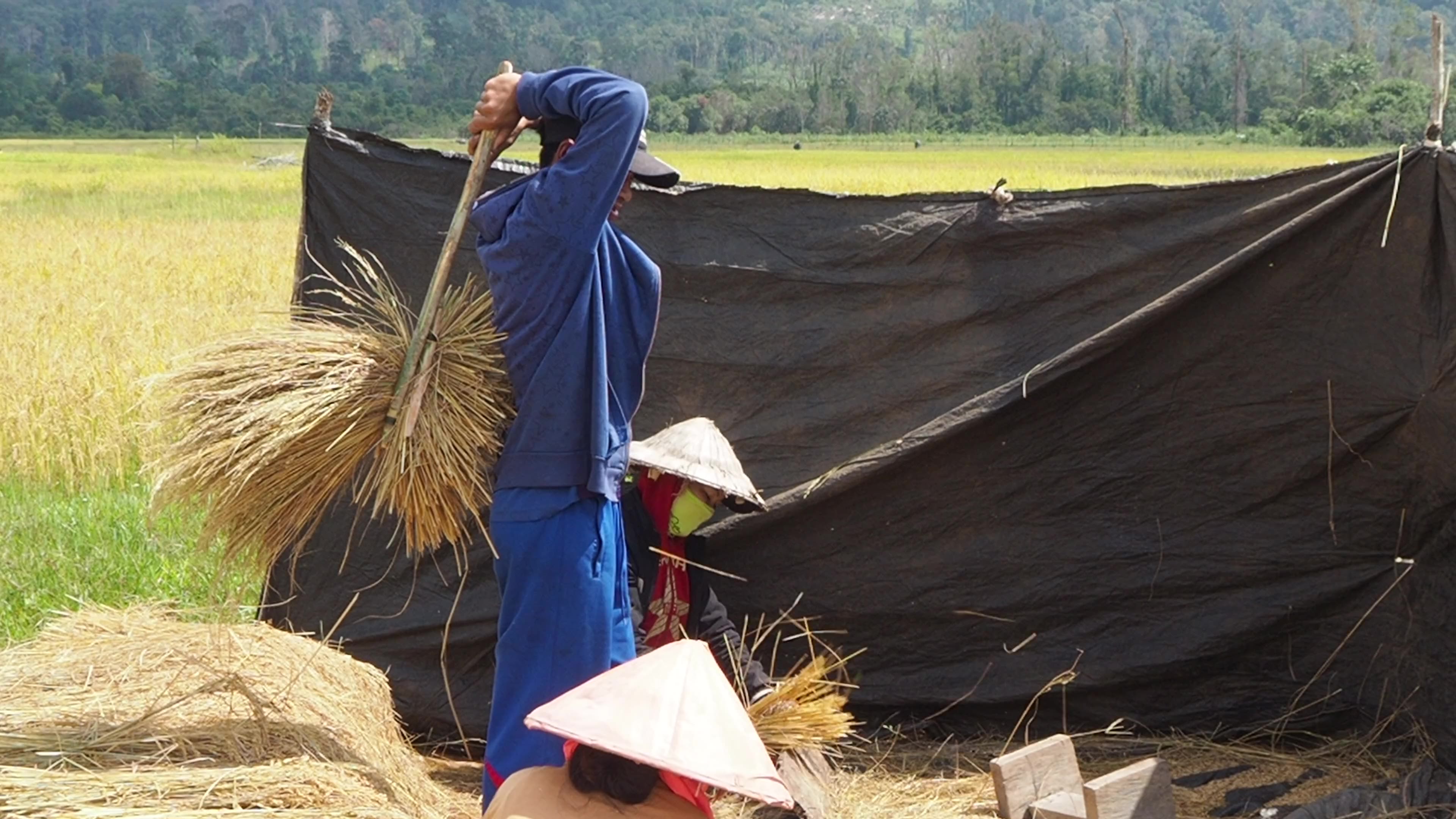
What would your life look like if rice vanished from your plate?
It may seem unlikely and unimaginable, especially for people in Asia, but imagine looking at your dining table one day, and the rice that once filled your plate is gone—not because it ran out but because the hope of those who grow it has withered away.
In 1961, women from the rural Phayao province of Thailand were driven off their farms into exploitative factory jobs and even the sex trade - consequents of the harsh realities of a consumer-driven economic system that were being promoted by the governing authority at the time.
Despite these hardships, they managed to stand back up, reclaimed their lives, and found new ways to thrive.
Their journey was inspired by the simple yet profound philosophy of "Nine Grains of Rice," derived from the humble rice seed that carries immense significance and teaches us the true meaning of life.
Rice theology - Rice that “dies” to give a new beginning
Father Niphot Thienvihan, a spirit of Bétharram but a diocesan local priest of 50 years carrying out his mission in the Diocese of Chiang Mai, northern Thailand, reflected on the symbolic meaning of rice, leading to the concept of rice that “dies three times” to give us life.
This profound philosophy reflects the interconnected cycles of life and nature. Each death of the rice grain does not signify an end but the beginning of new opportunities for other forms of life. This sacrifice teaches us about the deeper meanings of generosity and interdependence, often overlooked in daily life.
- First Death: When rice seeds are planted in the soil, they decompose in their "vegetative phase" to give birth to new rice plants. This symbolizes the power of new beginnings and the essence of selflessness in nurturing future life.
- Second Death: After harvesting, the remaining rice stalks are not discarded but are used as fodder for animals or composted to enrich the ecosystem. This represents the sustainable role of rice in nature’s cycle.
- Third Death: Rice is milled, pounded, and cooked into meals for human sustenance. This ultimate sacrifice allows people to live, symbolizing a profound connection between rice and humanity.
Father Niphot's deep engagement with rural communities reflects a Catholic perspective on compassion and interconnectedness. His background in interreligious studies helped bridge cultural and spiritual philosophies, crafting a universal lesson from a local practice.
The Pressure of Capitalism—A Test of Life
After the Vietnam War, Thailand embraced industrialization in the 1960s, prioritizing economic growth with the slogan, "Work is money, and money brings happiness."
This shift pushed rural women into urban factories, stripping them of their agrarian roots. Many were exploited as laborers or coerced into the sex industry, facing shattered dreams, family disintegration, and the AIDS epidemic.
The monetization of life reduced self-reliant communities to dependence on an exploitative economy, eroding cultural pride and dignity.
Father Niphot’s work in community development is rooted in rebuilding dignity and self-worth among those marginalized by industrial shifts. His emphasis on “Nine Grains of Rice” created a framework to restore both economic and spiritual stability and "rice theology".
The Revival of " The Nine Grains of Rice"
Amid the despair experienced by the people, Father Niphot' "rice theology" introduced the philosophy of "The Nine Grains of Rice." This idea emphasized the spiritual and practical value of rice over monetary wealth. Women created ornaments with rice grains covering money (a coin in local currency) to symbolize rice’s higher worth and their commitment to resist materialism.
The philosophy embodies a collective belief that
"Rice is more valuable than money."
Each grain representing shared life values and communal resilience.
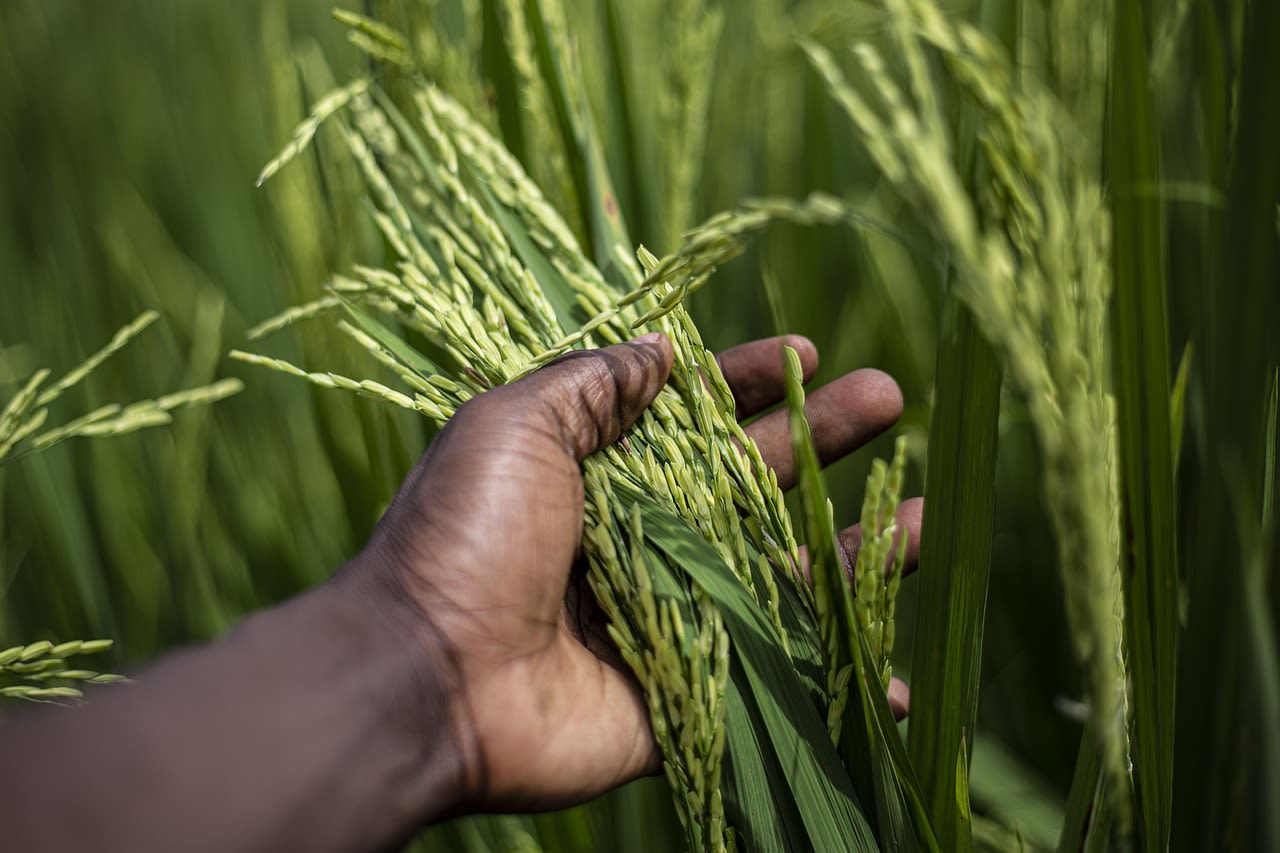
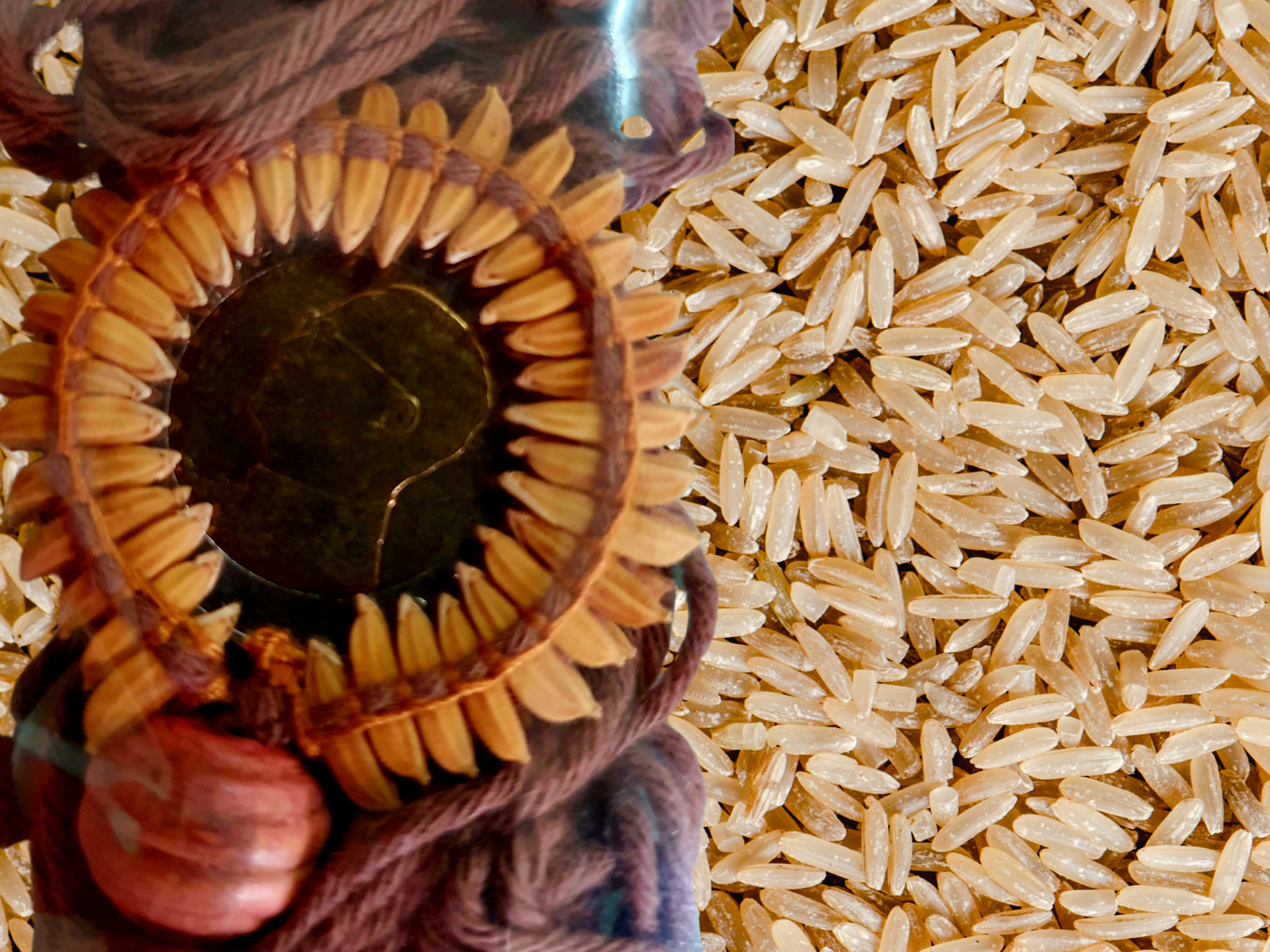
1. For family consumption – To eat with gratitude and share with others.
2. For nurturing the family – To teach love, care, and unity within households
3. For welcoming guests – To value hospitality and kindness.
4. For aiding the less fortunate – To show generosity and compassion.
5. For building strong communities – To foster sustainable unity.
6. For trade and exchange – To support self-reliance and equitable economies.
7. For religious and educational purposes – To invest in spiritual wellbeing and making merits
8. For honoring ancestors – To respect and remember those who came before us.
9. For sustaining a hopeful society – To inspire goodness, collective progress and build the kingdom of God.
Fr Niphot told LiCAS news the origin of the Nine Grains of Rice. (Photo by Peter Monthienvichienchai / LiCAS.news)
Fr Niphot told LiCAS news the origin of the Nine Grains of Rice. (Photo by Peter Monthienvichienchai / LiCAS.news)
Father Niphot’s biography notes his studies at the Penang Seminary and the Ecumenical Institute for Human Development, shaping his work in blending faith and community practices. His leadership showcased how religious teachings could inspire tangible social change.
“Tam Tor”: Restoring Lives with Compassion
The women of Phayao brought the philosophy to life through “Tam Tor,” a practice where villagers anonymously leave food and supplies outside the homes of the neediest in the community. This discreet giving preserves the dignity of the recipients, fostering a sense of belonging rather than dependency.
This act of anonymous charity reflects global movements like almsgiving in religious traditions. It emphasizes dignity, kindness, and solidarity in uplifting communities.
Decades of Fr. Niphot carrying out his mission among the Indigenous people of northern Thailand have created mutual respect between the Catholic faith and spirituality and culture of Indigenous people. (Photo from Research and Training center for Religio-Cultural Community - RTRC)
Decades of Fr. Niphot carrying out his mission among the Indigenous people of northern Thailand have created mutual respect between the Catholic faith and spirituality and culture of Indigenous people. (Photo from Research and Training center for Religio-Cultural Community - RTRC)
Fr. Niphot has been spreading the Good News among the remote communities in Thailand for half a century. (Photo from Research and Training center for Religio-Cultural Community - RTRC)
Fr. Niphot has been spreading the Good News among the remote communities in Thailand for half a century. (Photo from Research and Training center for Religio-Cultural Community - RTRC)
Father Niphot Thienvihan, a Bétharram Catholic priest - photo taken in 2024. (Photo by Peter Monthienvichienchai / LiCAS News)
Father Niphot Thienvihan, a Bétharram Catholic priest - photo taken in 2024. (Photo by Peter Monthienvichienchai / LiCAS News)
Women created ornaments with rice grains covering a) to symbolize rice’s higher worth and their commitment to resist materialism. (Photo by Peter Monthienvichienchai / LiCAS News)
Women created ornaments with rice grains covering a) to symbolize rice’s higher worth and their commitment to resist materialism. (Photo by Peter Monthienvichienchai / LiCAS News)
Rice blessing ceremony at Research and Training Center for Religio-Cultural Community (RTRC)
Rice blessing ceremony at Research and Training Center for Religio-Cultural Community (RTRC)
Northern Thailand experived extreme drought and famine in leading to acute shortage of rice, the food staple of every community in the country. (Photo from Research and Training center for Religio-Cultural Community - RTRC)
Northern Thailand experived extreme drought and famine in leading to acute shortage of rice, the food staple of every community in the country. (Photo from Research and Training center for Religio-Cultural Community - RTRC)
From Indigenous local wisdom to global applications
Circular Economies: Applying the philosophy to reduce waste and promote shared resources
Fr. Niphot pointed out that the "Nine Grains of Rice" philosophy can inspire circular economies by emphasizing resourcefulness and interconnectedness. In a circular economy, waste is minimized by reusing, recycling, and repurposing resources to extend their lifecycle. This mirrors how rice husks, stalks, and other by-products are reintegrated into the ecosystem, serving as animal feed, compost, or fuel.
Communities worldwide could adopt this mindset by sharing surplus goods, establishing local exchange systems, or creating networks that encourage collaborative consumption. For example, sharing platforms for tools or community-supported agriculture can ensure efficient resource use and reduce environmental strain.
By fostering a culture of sharing and collective responsibility, this philosophy transforms how societies view consumption and waste, making sustainable living accessible and equitable for all.
Sustainability Practices: Encouraging responsible consumption and environmentally conscious agriculture
The "Nine Grains of Rice" underscores the importance of valuing every resource, inspiring sustainability in how we grow, consume, and manage food.
Responsible consumption involves appreciating the effort and resources behind every product, reducing overconsumption, and minimizing waste. Environmentally conscious agriculture takes this further by prioritizing practices like organic farming, crop rotation, and water conservation.
Communities worldwide can learn from this approach, using local and seasonal produce to reduce carbon footprints and investing in regenerative farming techniques that restore soil health and biodiversity.
By promoting self-sufficiency and ecological balance, the philosophy helps to mitigate climate change impacts while ensuring food security for future generations.
Human-Nature Balance: Promoting a renewed respect for natural resources and local traditions
The philosophy of the "Nine Grains of Rice" reminds us of the intimate relationship between humanity and nature, advocating for a harmonious coexistence.
Modern development often prioritizes industrial growth over ecological preservation, leading to habitat destruction and resource depletion. By reviving respect for natural resources, such as water, soil, and forests, communities can adopt practices that sustain both human life and the environment.
Additionally, celebrating and preserving local traditions—like rice planting festivals or traditional irrigation systems—reinforces this connection, offering cultural and environmental benefits. These traditions not only sustain biodiversity but also strengthen community bonds, providing a model for living in balance with the Earth.
The philosophy serves as a poignant reminder that respecting nature is not just a rural ideal but a universal necessity and a path for future development - looking forward not backwards.
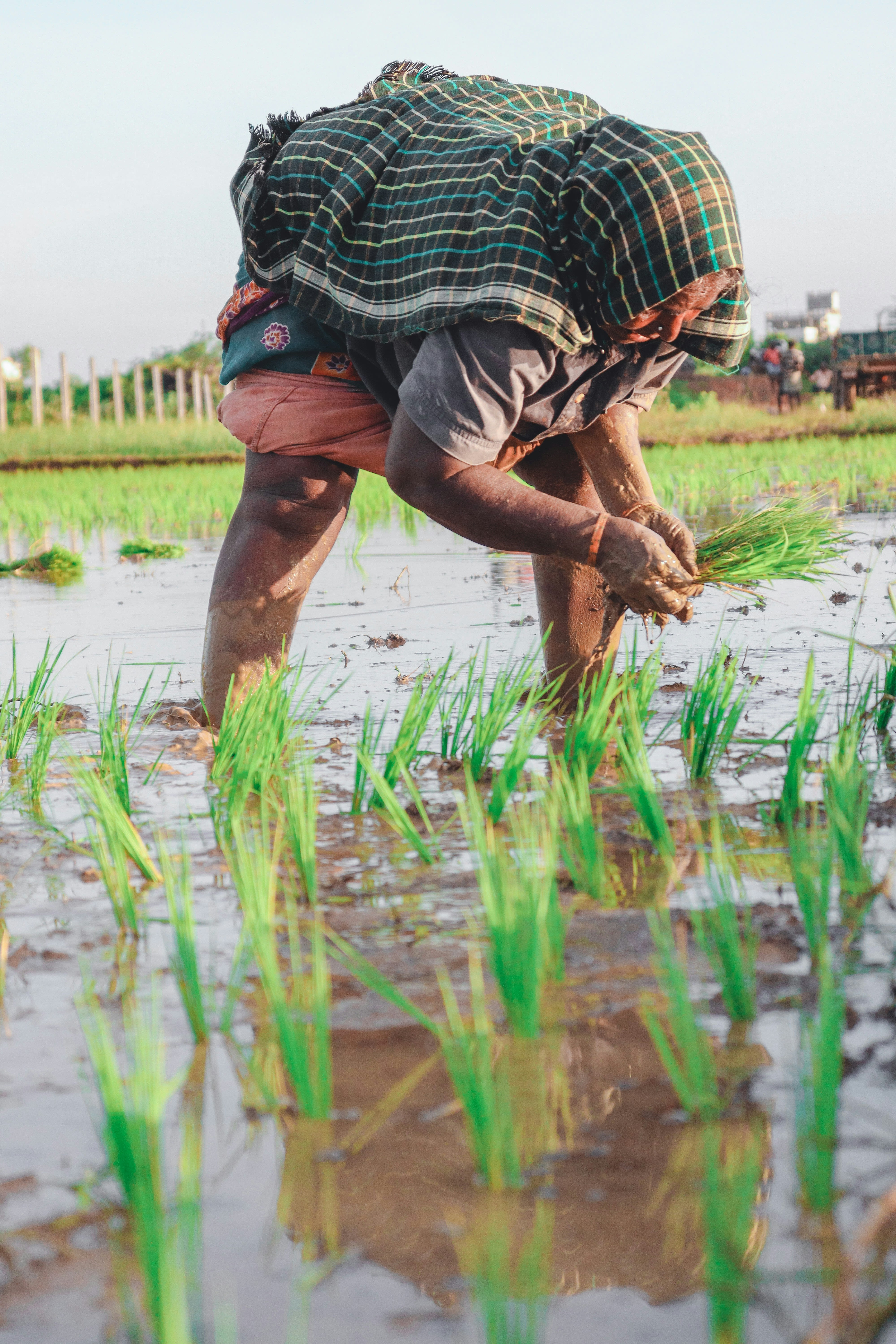
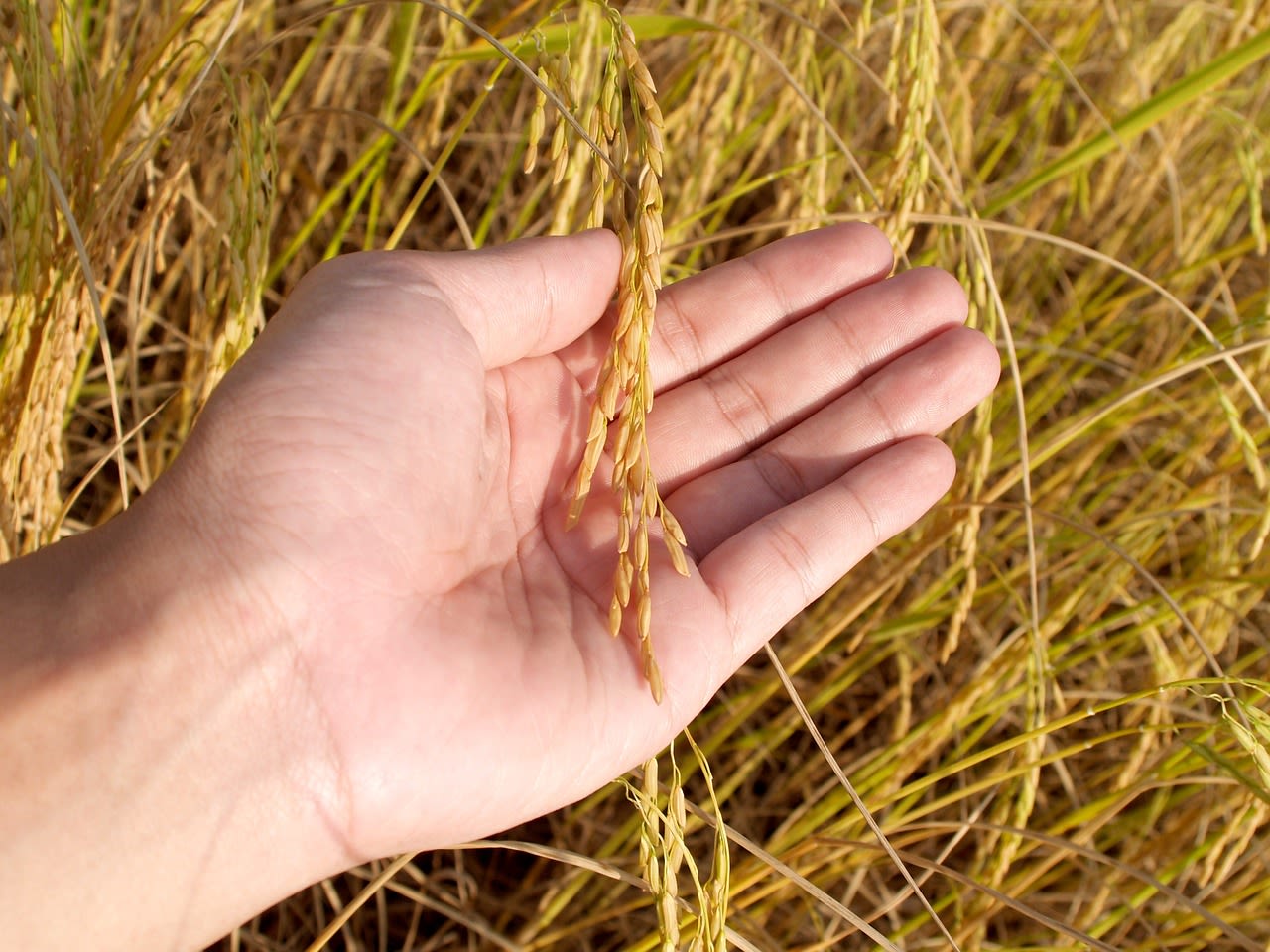
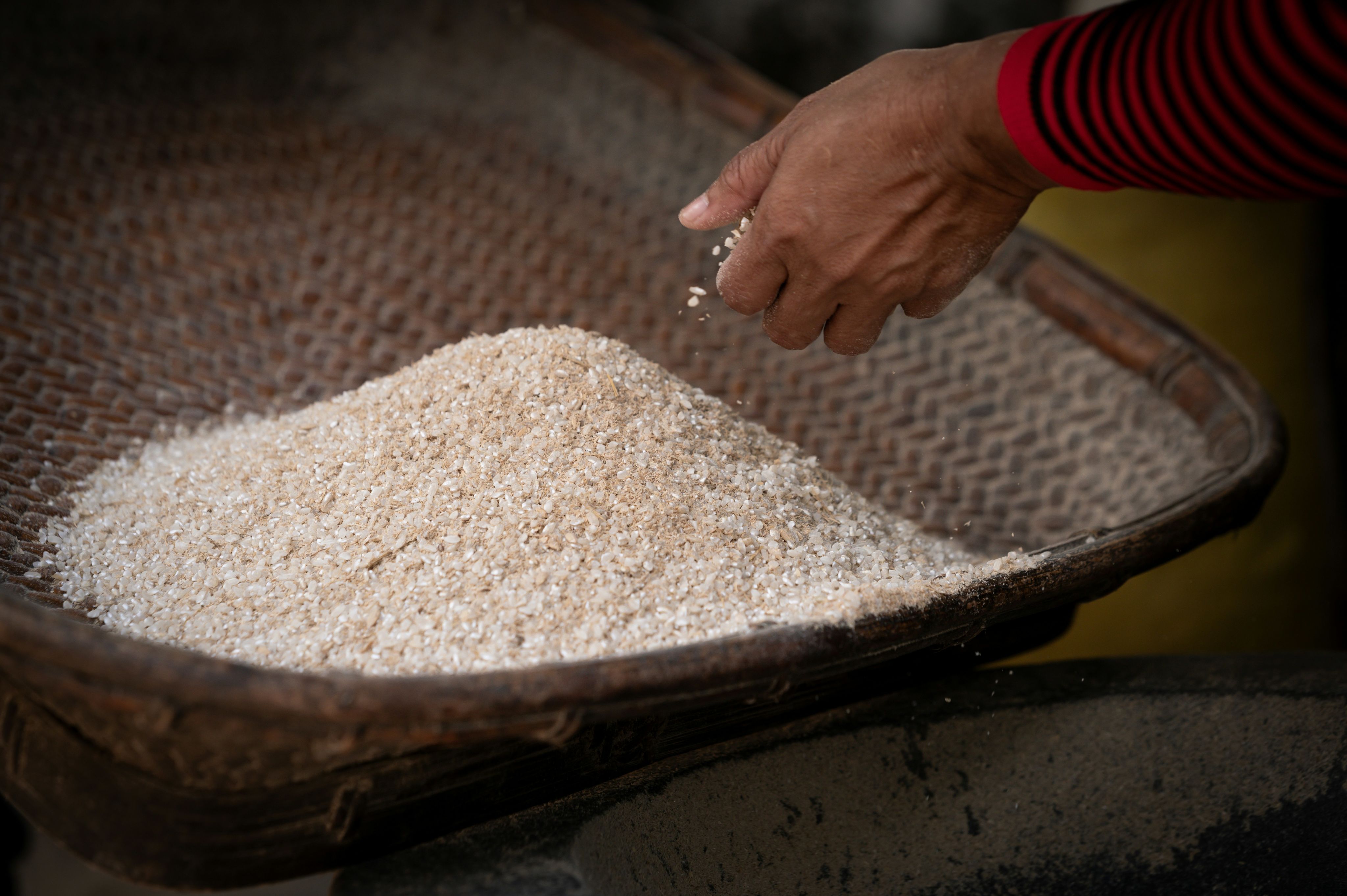
Lessons from the Community: The Nine Grains of Rice as a Tool for Restoration
The example of the women in Phayao demonstrates how reviving traditional ways of life and applying the philosophy of "Nine Grains of Rice" can produce sustainable and transformative outcomes.
- Building Support Networks:
The philosophy extends beyond material aid. It fosters the creation of a network where community members can depend on one another - to be in communion with one another - in stark contrast to modern western culture that promotes independence and individual rights. This network builds resilience during times of crisis, whether through shared food, collaborative labor, or mutual emotional support.
Traditional wisdom can inform modern community development practices. Globally, marginalized groups can adapt to create similar networks
Inspiring Broader Communities:
The story of the origin of the "Nine Grains of Rice" serves as an inspiration for other communities across the country to revisit and cherish the true value within their own cultures. By reclaiming pride in local traditions and understanding their deeper meanings, communities can find the strength to overcome challenges stemming from modern economic and social norms and expectations.
This message resonates universally, reminding people of the power of their own cultural heritage to address contemporary problems.
The Nine Grains of Rice Restoring Lives
The philosophy of the "Nine Grains of Rice" may seem like a simple tale, but it carries invaluable life lessons. Even small acts of sharing can create significant impact, helping communities rebuild strength and unity.
The women of Phayao have shown that happiness doesn’t lie in the amount of money one holds. Instead, it lies in the heart that is ready to give and the ability to appreciate the value of what one already has.
Nine Grains of Rice in Thai Life
The philosophy of "Nine Grains of Rice" is more than just a daily sustenance in Thai households—it is a symbol of love, unity, and interconnectedness within families and communities.
Sharing rice within families or assisting neighbors during difficult times reflects the deep-rooted value of these grains. Rice, therefore, fulfills not only physical needs but also emotional warmth, representing a heritage of Thai culture that has been passed down for generations.
The Thai manner of asking if you have had a meal yet, "กินข้าวหรือยัง" - literally translated to "have you eaten rice yet?", is both a friendly generic greeting as well as a genuine enquiry as to the well-being of the person being greeted.
Nine Grains of Rice in a consumer-driven world
In a world driven by economic competition, profit maximization and individual gains, the philosophy of "Nine Grains of Rice" serves as a poignant reminder of the value of small, overlooked things. The simplicity and sufficiency embodied in rural life remind us of the meaningful relationships between individuals in society.
This philosophy challenges the materialistic mindset and highlights the importance of sustainable and harmonious living, offering long-term solutions that counterbalance the pursuit of mere material wealth.
Bringing Nine Grains of Rice to the Future
The manner in which Fr. Niphot shares the philosophy of "Nine Grains of Rice" with visitors to his Research and Training center for Religio-Cultural Community (RTRC) in Chiang Mai, is a testament to the philosophy's potential to inspire future generations to develop a balanced way of life that integrates economic progress, cultural preservation, and environmental harmony.
Leveraging its deep symbolism of sufficiency and sustainability, this philosophy can guide the sustainable development of a society that values mental well-being and environmental preservation. Passing this concept to future generations is essential for maintaining the core values of Thai culture and promoting a way of life that respects both humanity and nature.
The "Nine Grains of Rice" is not just a story from the past but a solution for the future, bringing peace, happiness, and resilience back into our lives.
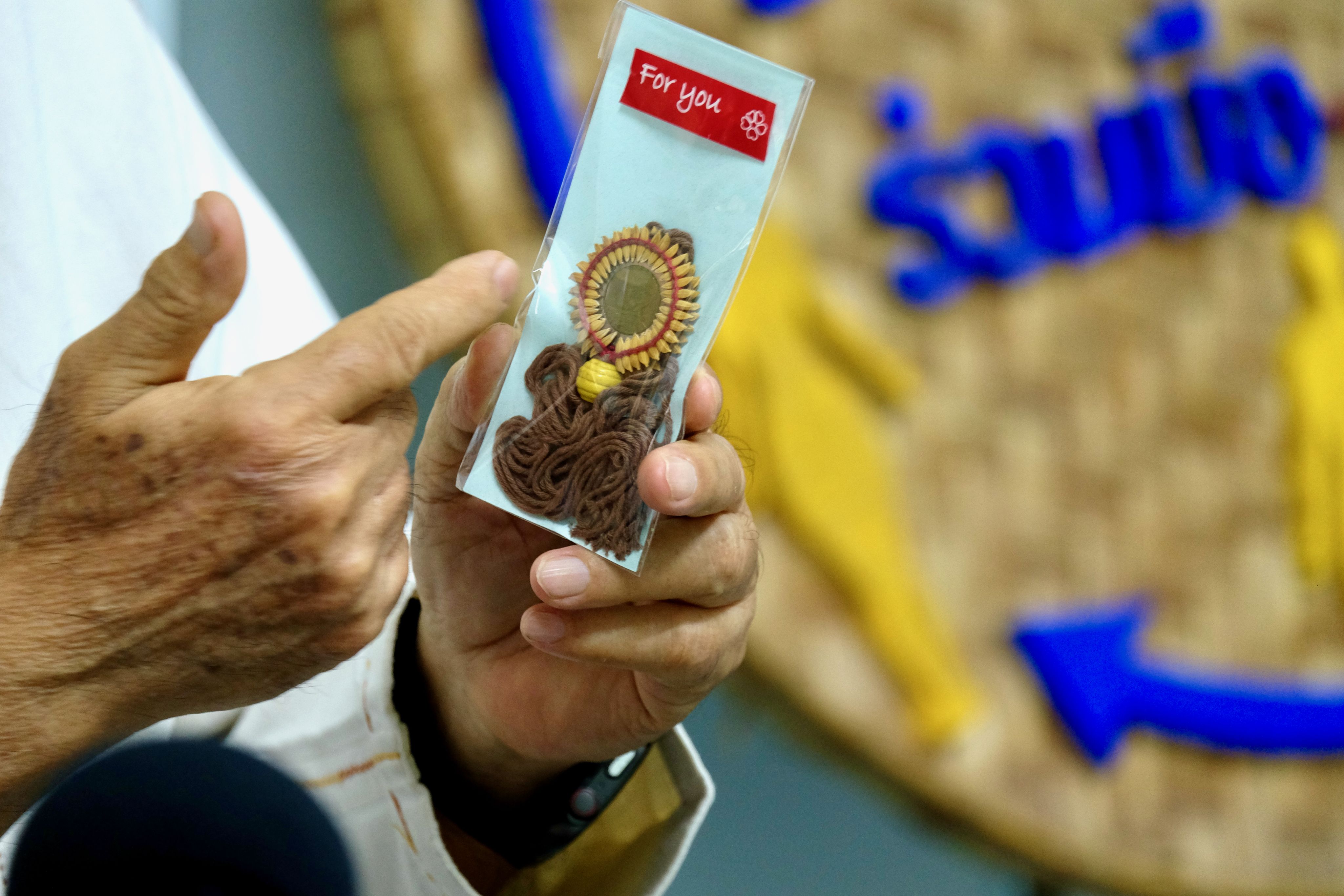
With generous support from
Pontifical Society of the Propagation of the Faith
Original Thai Text by Kamoltip Vongleethanaporn
English Text by June Nattha Nuchsuwan
Edited by Peter Rachada Monthienvienchai
Produced by June Nattha Nuchsuwan
Published January 10, 2025
© Copyright MMXXV LiCAS.news

